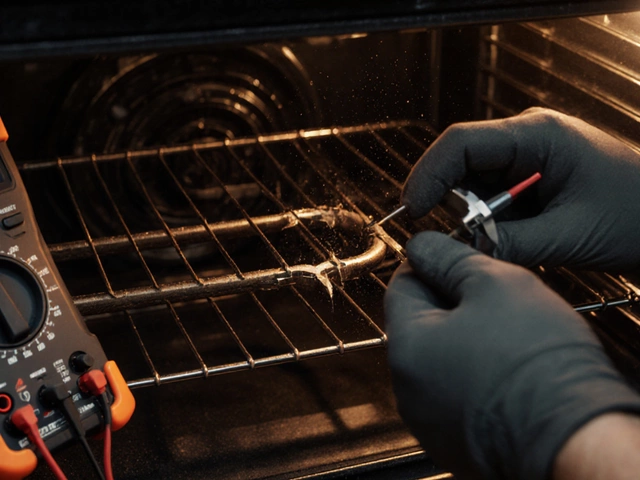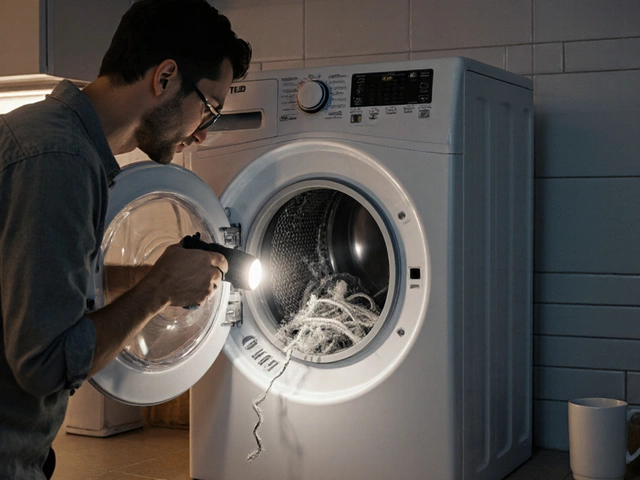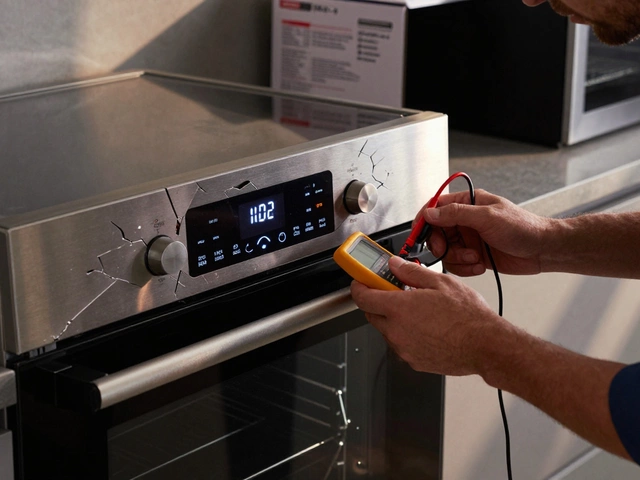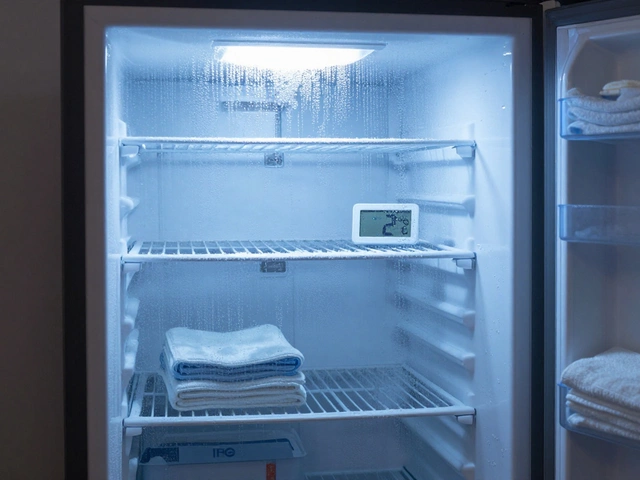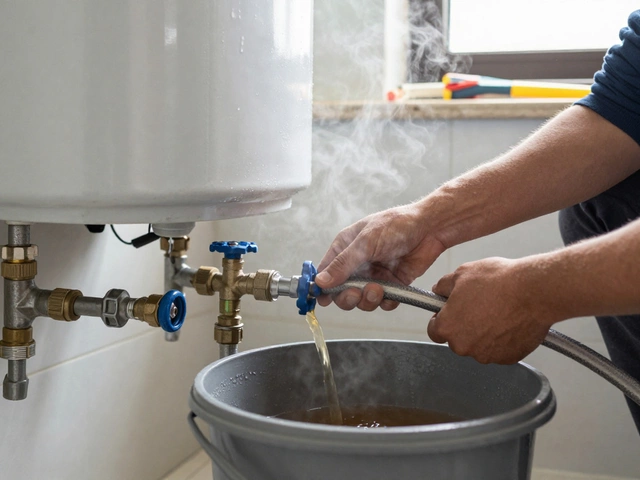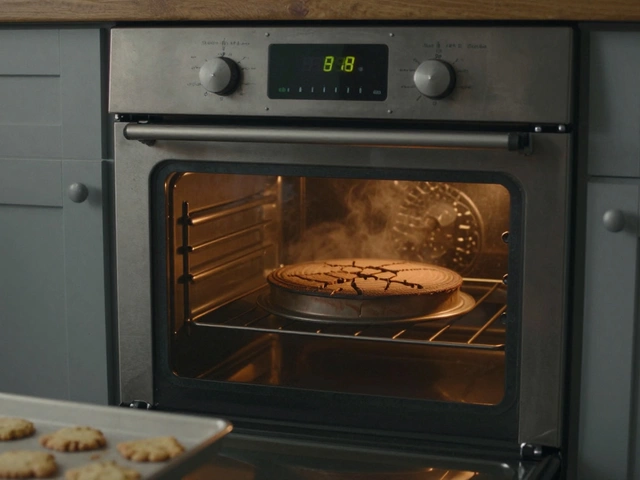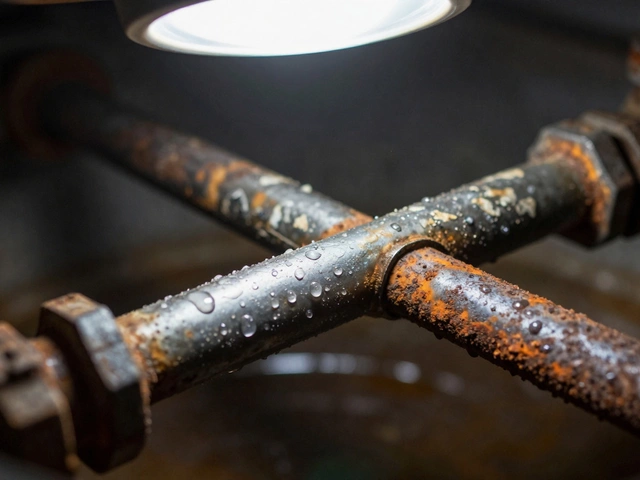If dinner’s taking forever because your oven won’t heat, a bad igniter could be the culprit. This little part gets your gas oven roaring to life, but when it dies, you’re left with cold pizza and cranky kids—trust me, happened at our house last winter. Before you pull out your wallet or your tool kit, let’s talk numbers and what to expect.
Most folks pay between $100 and $300 to fix a gas oven igniter. That covers both parts and someone’s labor if you hire a pro. If you’re handy and want to skip the service fee, you can grab the part yourself for anywhere from $25 to $75. Prices swing depending on oven brand and how easily you can get at the igniter. Don’t forget about small things, like the screws hiding behind a crumb-covered panel. Sometimes, the hardest part is just getting to the igniter without swearing in front of the kids.
- How Gas Oven Igniters Work
- Signs Your Gas Oven Igniter Needs Repair
- Average Repair Costs: Parts and Labor
- DIY vs. Professional Repair
- Tips to Cut Down Repair Bills
- When It’s Time to Replace, Not Repair
How Gas Oven Igniters Work
If your casserole ends up cold in the middle while the oven hums but never fires up, the igniter is probably to blame. This part is the MVP behind the scenes. It sparks things off—literally—by generating enough heat to open the oven’s gas valve and light the burner.
Most modern gas ovens use a hot surface igniter, also called a glow bar. This piece is made from a tough ceramic. When you set your oven to bake, electricity flows through the igniter. In about 30-60 seconds, it glows red hot. When it’s hot enough (usually above 1,000°F), the heat signals a safety valve to open and lets the gas through. The igniter lights the gas, making that satisfying whoosh—and you’re in business.
Spark igniters work a bit differently. They use a quick electrical spark instead of a steady glow. You’ll see these more often on cooktop burners, but some ovens use them too. Here, a click-spark lights the gas right when you turn the knob.
- Gas oven igniter gets hot enough to unlock a safety valve and light the flame.
- If the igniter doesn’t reach the right temp, the gas won’t flow—and your oven stays cold.
- Most oven issues come from the igniter wearing out over time. Expect it to last around 3-7 years, sometimes more if you’re lucky and gentle with the oven door.
For a quick look at how these parts stack up, here’s a breakdown:
| Type of Igniter | Used On | How It Works | Typical Lifespan |
|---|---|---|---|
| Hot Surface (Glow Bar) | Most gas ovens | Heats up until gas valve opens, then lights gas | 3-7 years |
| Spark Igniter | Gas cooktops, some ovens | Creates an electric spark to light gas | 5-10 years |
If your oven’s not heating up, this is usually the first place a repair tech checks. The igniter is small, but it does all the heavy lifting to get your oven working safely and on time for dinner.
Signs Your Gas Oven Igniter Needs Repair
When your oven starts acting up, it’s tempting to blame it on power outages or your favorite recipe. But the igniter is a common troublemaker. You don’t need a toolbox or a repair manual to spot the signs—a few clues can save you hours of dinner drama (and a call to pizza delivery).
- Oven won’t heat: You set the temperature, but nothing happens. The igniter is probably failing to spark the gas. This is the most obvious red flag and often the first thing folks notice.
- Preheating takes ages: Normally, you’re ready to bake in about 10-15 minutes. If it’s stretching to 30 minutes or the oven never quite hits the mark, the igniter may be too weak to consistently open the gas valve.
- No click or glow: When you turn the oven on, you should hear a click or see a faint orange glow in the oven’s bottom. No sound or light? It’s probably time for an igniter check.
- Gas smell but no flame: If you smell gas but the oven won’t light, turn everything off and air out the kitchen. A bad igniter might let gas through without sparking it—never ignore this one. Safety first!
- Food cooks unevenly: If one pizza comes out half raw and half burnt, or you’re flipping cookies so they don’t blacken on only one side, the igniter may be firing inconsistently.
I once stuck a digital thermometer in my oven and noticed dinner was taking way longer than usual at just 250°F, even though I’d set it to 400°F. Sure enough, the culprit was a worn-out igniter—no fancy repairman tools needed to figure that out.
| Symptom | Possible Issue |
|---|---|
| Oven won’t heat | Igniter failed |
| Slow preheating | Weak igniter |
| No glow or click | Igniter not getting power |
| Gas smell without flame | Igniter not lighting |
| Uneven cooking | Igniter inconsistent |
Pay attention to these details—they point straight to the gas oven igniter. Replacing an igniter is a lot cheaper than an emergency fix for a bigger problem. And if you still aren’t sure, take a video of what your oven’s doing (or not doing) and compare it to demo videos for your oven’s brand. That’s how I confirmed mine, and it saved plenty of time (and money).
Average Repair Costs: Parts and Labor
When you’re staring at a cold oven and your casserole refuses to bake, the big question hits: what’s this going to cost? For a gas oven igniter repair, most people in the U.S. spend somewhere between $120 and $275. That number jumps around a bit depending on your oven brand, the cost of local labor, and whether there’s a second problem hiding out (like a busted safety valve).
The igniter itself is one of the cheaper parts in a gas oven, usually running from $25 to $75 at hardware stores or online. Labor is what really bumps up the bill—appliance techs can charge anywhere from $80 to $200 just for the visit, not counting parts. If you call for a repair in a major city, expect it on the higher side; small towns sometimes get a break, but not always.
Here’s what your repair bill might look like in a simple breakdown:
| Cost Item | Typical Price Range |
|---|---|
| Igniter Part | $25 – $75 |
| Labor/Service Call | $80 – $200 |
| Total Cost (Average) | $120 – $275 |
Oven brands matter, too. High-end brands like Viking or Wolf sometimes have special igniters that bump the part price up by $20 to $50 compared to standard models. If a technician runs into rusted screws, hard-to-reach parts, or needs to disconnect the whole stove, that labor charge can climb even higher.
If your oven is more than 10 years old, ask about any flat-rate repair deals. Some repair companies offer them for common fixes like igniters, so you don’t get hit with a surprise add-on if the job takes longer than expected. Also, keep an eye out for service call fees that get rolled into the final bill if you agree to the repair—otherwise, you might pay for the visit even if you pass on their quote.

DIY vs. Professional Repair
Trying to fix your gas oven igniter yourself can save you some cash, but it’s not always the right call for everyone. If you’re not used to tinkering with appliances, it’s easy to strip a screw, break a wire, or even forget to shut off the gas—trust me, that last part matters a lot. About 40% of appliance repairs in the U.S. are handled by homeowners, and igniter replacement is a pretty doable job for those with a little patience and a screwdriver.
If you decide to go the DIY route, here’s the short version of what you’re taking on:
- Unplug the oven and turn off the gas—double check this, always.
- Take out the oven racks and bottom panel to reach the igniter.
- Unscrew and disconnect the old igniter (you may need a nut driver).
- Connect the new igniter. Don’t touch the ceramic tip—oils from your fingers can mess it up.
- Screw everything back and test before you put all the panels and racks in place.
Job done right? You just fixed one of the most common reasons for an oven not heating and saved yourself a service call.
But there are times when you should definitely call in a pro:
- If your oven is still under warranty—messing with it yourself could void that.
- If there’s any sign of a gas leak or you smell gas at all, safety first. Step away and get a technician.
- Electric combo ovens or double ovens can be way trickier to open up.
Here's a quick breakdown showing how the costs stack up:
| Option | Typical Cost Range | Time Needed |
|---|---|---|
| DIY Repair | $25 – $75 | 30–60 minutes |
| Professional Repair | $100 – $300 | Same or next day |
If time is tight or you’re not feeling confident, hiring a pro is a solid bet, especially since a gas oven igniter repair is something they see every week. I once tried to cheap out and ended up buying the wrong igniter—ended up calling a tech anyway, which cost me more. If you go DIY, check that model number twice.
Tips to Cut Down Repair Bills
No one likes getting hit with a big repair bill, especially for something as boring as a gas oven igniter. Here are some easy ways to keep costs manageable (and maybe save enough for a pizza night after it's fixed).
- Shop Around for Parts: Don't take the first price you see. Big-box stores, local appliance parts shops, and online spots like Amazon or RepairClinic offer a wide range. For most brands, an igniter will cost you $25 to $75. Sometimes, local stores will even test your old igniter for free before you buy a new one.
- Check Warranty First: Your oven might still be under manufacturer warranty, or you could have an extended appliance plan. A quick call could save you the full price of repair.
- Look for Appliance Repair Discounts: Some repair shops have first-time customer discounts, coupons, or bundled deals if you get more than one thing fixed. Ask about specials—techs don’t always mention them unless you do.
- Handle Simple Tasks Yourself: If you can use a screwdriver and follow a YouTube video, you might replace the igniter yourself. Just remember to unplug or cut the breaker for safety. Most people finish in 20–40 minutes.
- Book During Off-Peak Times: Appliance pros get booked out around holidays and weekends. If you pick a weekday morning, you might get a lower price—or at least have less waiting time.
If you like numbers, here’s a quick look at typical costs for a gas oven igniter repair versus other oven repairs:
| Repair Type | Parts Cost | Average Labor Cost | Total Typical |
|---|---|---|---|
| Gas Oven Igniter | $25–$75 | $75–$150 | $100–$225 |
| Oven Thermostat | $35–$90 | $100–$175 | $135–$265 |
| Control Board | $120–$300 | $100–$200 | $220–$500 |
Avoid getting overcharged by asking for a breakdown of labor and parts upfront. If your old igniter looks burnt or cracked, just snapping a photo and texting it to the parts shop can help you confirm what you need—no guessing. Keep the model number handy, too. Finally, skip same-day emergency service unless the oven is your only way to feed your family; those fees can double your total bill.
When It’s Time to Replace, Not Repair
There’s a point where fixing that stubborn gas oven igniter just isn’t worth it. Trust me, I’ve been there—sorting through replacement parts, feeling optimistic, only to find the oven still stone-cold. Sometimes, it’s smarter to swap out the whole appliance and save your sanity—and your wallet—down the line.
Here’s when you should consider replacing your oven, not just another igniter:
- The oven is 15+ years old. Most gas ovens last about 13-17 years. Past that mark? Every repair feels like gambling on borrowed time.
- Multiple repairs in a year. If you’ve called a tech more than twice in the last 12 months, add up those bills. The total often creeps close to the price of a new oven.
- The repair cost exceeds half the price of a new oven. If fixing the igniter and any other problems runs $400+ (with basic models starting around $700), you’re better off investing in new hardware.
- Broken beyond the igniter. If you’re facing issues with the control board, gas valves, or wiring at the same time, things start to add up fast.
Here’s a quick breakdown of when replacement makes sense:
| Situation | Fix | Replace |
|---|---|---|
| Oven is 10 years old, minor repair needed | ✓ | |
| Oven is 16 years old, igniter and control board issues | ✓ | |
| Repair cost about $250, new oven $700 | ✓ (if other components are good) | |
| Repairs are $400+, new oven $700 | ✓ |
Don’t forget about energy savings, either. New ovens use less gas and cook more evenly, so Everett and Lena aren’t fighting over the one properly browned cookie from the batch.
Bottom line: if you’re running into endless repairs or dealing with an ancient oven, spend your cash on an upgrade instead of another service call. Brands often run holiday sales—watch for Memorial Day or Black Friday deals if you can wait a bit.



